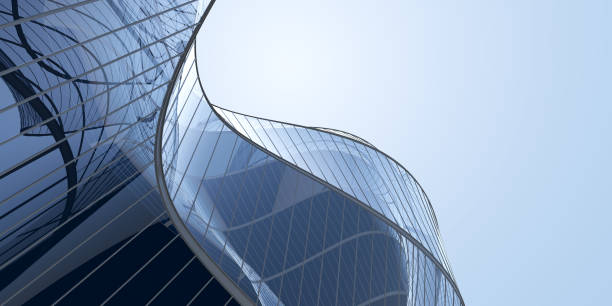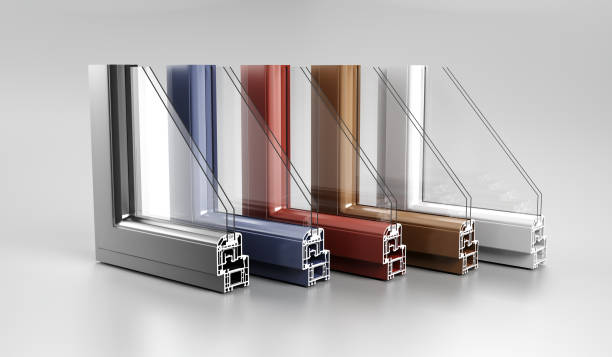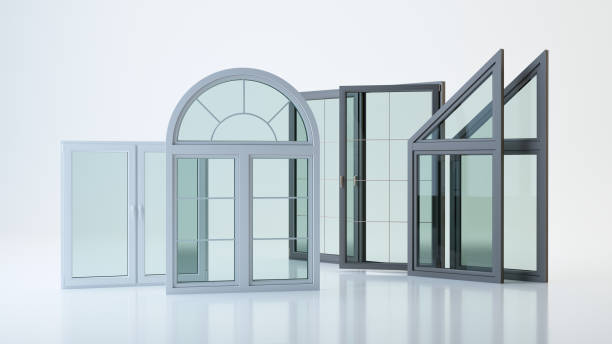In the ever-evolving world of modern architecture, aluminium window designs have emerged as a game-changer, redefining the way homeowners perceive style, durability, and energy efficiency. No longer confined to basic, functional roles, these windows now serve as essential design elements that enhance both the visual appeal and practical functionality of contemporary and traditional homes alike. Their popularity is growing as homeowners and architects recognize their unique ability to blend form and function.
One of the standout qualities of aluminium window designs is their sheer versatility. Available in a wide range of configurations—from sleek casement styles that swing outward to space-saving sliding options and sophisticated tilt-and-turn designs—they cater to diverse architectural preferences. This adaptability allows them to blend seamlessly with modern minimalist aesthetics, rustic charm, or even the grandeur of classic home styles. Homeowners are no longer limited by design constraints; instead, they can select window styles that enhance their living spaces and complement their home’s overall aesthetic.
Beyond aesthetics, aluminium windows offer impressive structural benefits. Aluminium’s innate strength allows for the creation of slim, elegant frames that maximize glass surface area, providing homeowners with larger, unobstructed views of the outdoors. This influx of natural light brightens interiors, creating warm, inviting living spaces. Moreover, these frames are resistant to warping, rust, and corrosion, ensuring long-lasting performance even in harsh weather conditions.
Energy efficiency is another key driver of the rising demand for aluminium window designs. Modern variants come with advanced thermal break technology, which reduces heat transfer and enhances insulation. By minimizing energy loss, these windows contribute to lower energy bills, a vital consideration for eco-conscious homeowners seeking sustainable living solutions. Additionally, the material’s recyclability aligns with global sustainability goals, making aluminium windows an environmentally responsible choice.
Durability is equally important, especially for homeowners looking for long-term value. Unlike traditional wooden frames that require frequent maintenance, aluminium frames are low-maintenance and built to withstand extreme weather conditions. They maintain their appearance and performance for years, with minimal effort required for upkeep. This makes them a cost-effective choice for those seeking lasting value.
Furthermore, aluminium window designs are customisable in terms of colour, finish, and texture. Thanks to advanced powder-coating technology, homeowners can choose from an extensive palette of colours and finishes to match their home’s unique character. Whether it’s a matte black finish for a bold, modern statement or a natural woodgrain effect for a traditional touch, the possibilities are nearly endless.

A World of Choices: Types of Aluminium Windows
When it comes to aluminium windows, homeowners are spoilt for choice. The variety of designs ensures that every architectural preference is met, whether for modern minimalism or classic elegance.
1. Casement Windows Casement windows are celebrated for their sleek profiles and practical design. With their side-hinged opening mechanism, they provide excellent ventilation and uninterrupted views. Available in various styles, such as leaded glazing or Georgian bars, these windows suit modern and traditional homes. Flush casement designs are particularly popular for their seamless integration into modern home aesthetics.
2. Tilt and Turn Windows If versatility is what you seek, tilt-and-turn windows are the perfect fit. These windows can tilt inwards for gentle ventilation or swing fully open for easy cleaning, making them a homeowner’s dream in terms of functionality. The ability to manufacture them in larger sizes, even as big as a standard door, adds to their appeal in contemporary home designs.
3. Sliding Windows For homes where space-saving solutions are essential, sliding windows offer a sleek alternative. They provide maximum window openings in vertical and horizontal formats without taking up extra space. Vertical sliding windows are ideal for homes with a classic touch, while horizontal sliding windows mirror the functionality of patio doors, offering expansive views and ample natural light.
Customisation: Tailoring Aluminium Windows to Your Taste
Customisation is at the heart of aluminium window design. Homeowners can personalise their windows to match their home’s aesthetic and functional needs.
1. Colour Variety Aluminium windows come in a broad palette of colours, allowing homeowners to match them with interior and exterior design schemes. Popular choices include anthracite grey, moss green, and ruby red. Thanks to powder coating, these colours are long-lasting and weather-resistant and can differ for the interior and exterior of the window frame.
2. Glazing Options The choice of glazing impacts the look and performance of aluminium windows. Options range from clear glass to textured and ornamental designs, while double and triple glazing significantly improve thermal efficiency. Noise-dampening and safety glasses are also available for added security and comfort.
3. Hardware and Accessories Premium handles, locks, and window bars can enhance the security and functionality of aluminium windows. Multi-point locks, for instance, provide extra security, while stylish handles in stainless steel or aluminium add an elegant finishing touch.
Energy Efficiency: A Sustainable Choice for the Future
One of the key reasons homeowners opt for aluminium windows is their superior energy efficiency. Thanks to modern advancements in manufacturing, these windows significantly reduce heat loss and maintain a comfortable indoor climate.
1. Thermal Break Technology Thermal breaks are a game-changer in aluminium window design. Creating a barrier between the inner and outer frame prevents heat transfer, keeping homes warmer in winter and cooler in summer. Polyamide, a material with excellent insulating properties, is commonly used in these thermal breaks, enhancing the window’s overall energy performance.
2. Double and Triple Glazing Double glazing, featuring two panes of glass separated by an argon-filled gap, significantly reduces heat transfer. Triple glazing goes further, offering even better insulation and noise reduction. Investing in double or triple-glazing is wise for homeowners keen on cutting energy bills.
Durability and Maintenance: Built to Last
Unlike wooden windows, aluminium windows are built to withstand the test of time. They are corrosion-resistant, require minimal maintenance, and retain their appearance for decades.
1. Powder Coating The powder-coating process enhances the visual appeal of aluminium windows and boosts their resistance to harsh weather conditions. This coating creates a smooth, durable finish that resists peeling, cracking, and fading.
2. Cleaning and Care Maintenance is simple. Cleaning aluminium windows requires only warm, soapy water and a soft cloth every few months. Abrasive cleaners are unnecessary, and with minimal care, the windows maintain their lustrous appearance for years.
Security Features: Peace of Mind for Homeowners
Security is a top priority for homeowners, and aluminium windows are designed to meet modern safety standards. Advanced security features include:
1. Multi-Point Locking Systems Unlike standard locks, multi-point locking systems secure the window at multiple points along the frame, making it significantly harder to force entry. This design element is a key feature in modern security certifications like PAS 24.
2. Laminated Security Glass Laminated glass consists of two layers with an interlayer that holds them together even if shattered. This makes it harder for intruders to breach and provides an added layer of security.
Cost and Value: Worth Every Penny
While aluminium windows have a higher upfront cost than materials like uPVC, their long-term benefits far outweigh the initial investment.
1. Price Factors The cost of aluminium windows varies based on size, design, and customisation. Larger or uniquely shaped windows increase costs, as do premium finishes and glazing options. However, aluminium windows’ longevity, energy efficiency, and low maintenance make them a cost-effective choice in the long run.
2. Getting a Quote Homeowners are encouraged to obtain quotes from multiple suppliers or use online window configurators to get an accurate idea of pricing. Comparing quotes ensures homeowners get the best deal for their investment.
How Aluminium Windows Stack Up Against Other Materials
Compared to uPVC and wooden windows, aluminium is the clear winner in terms of durability, design flexibility, and energy efficiency.
1. Aluminium vs uPVC Although uPVC windows are cheaper initially, aluminium windows offer better longevity, environmental sustainability, and modern aesthetics. Their ability to support larger panes of glass makes them ideal for contemporary homes.
2. Aluminium vs Wooden Windows Unlike wood, which is prone to warping, cracking, and rot, aluminium windows remain stable in all weather conditions. Their low maintenance and superior thermal efficiency make them a better choice for homeowners looking for long-term value.

Conclusion
Aluminium window designs offer the perfect balance of form and function. Their versatility, energy efficiency, and modern aesthetics make them a compelling choice for homeowners seeking to upgrade their properties. From the sleek lines of casement windows to the space-saving elegance of sliding windows, aluminium options cater to every style and preference. When combined with advanced security features, customisation options, and energy-saving technologies, aluminium windows become an investment that enhances property value and quality of life. Aluminium windows are an unmatched choice for those looking to enhance their homes with style and sustainability.

